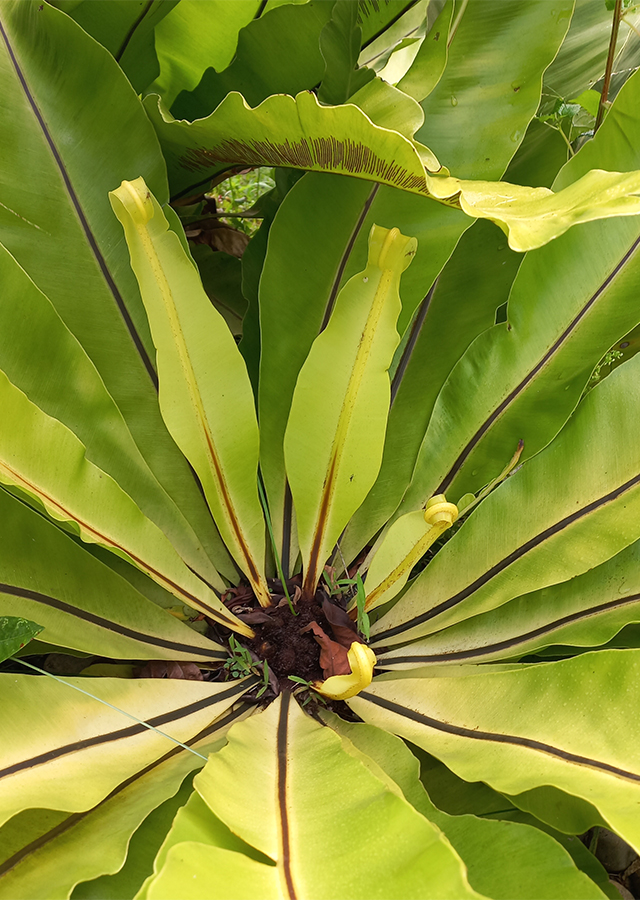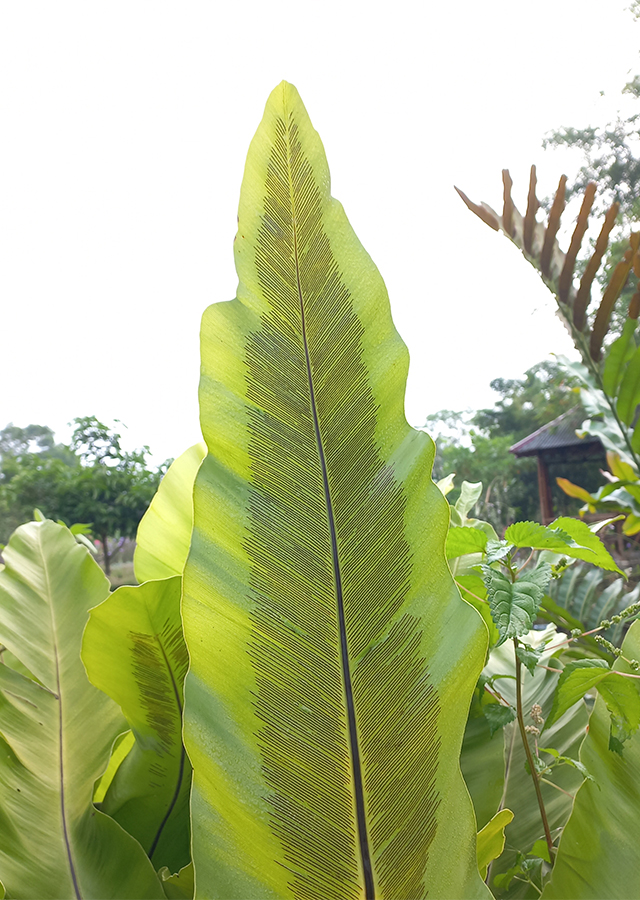Traditional Herbs from Asplenium nidus
relieve_labor_pain
- Prepare enough kadaka leaves then wash them until clean.
- Boil the leaves until boiling.
- Strain the boiled product.
- Drink while it's warm.
cold
- Take kadaka leaves to taste.
- Burn the leaves until smoke emits.
- Inhale the smoke\u00a0from the burnt leaves, do it until the cold feels\u00a0reduced.
What is Asplenium nidus Looks like??



Parts of Asplenium nidus that could be used
- Shoot
- Leaf
- Root
Asplenium nidus Distribution
Kadaka is a fern that is widespread throughout the tropical regions of the Old World, from East Africa through India, Sri Lanka, throughout Southeast Asia to Taiwan, Australia, Tahiti and Hawaii. This plant is often planted by people as an ornamental plant, because the unique shape of its leaves is like forming a bird's nest, so it is also known as 'Bird's Nest Fern'. Kadaka also has magical value in Malaysia, where people believe this plant houses the ghost of a woman who died during childbirth. Kadaka can also be used as a vegetable and craft material, where the curly young leaves can be consumed as a vegetable, and Taiwanese people consume the sprouts as a vegetable and the stems are used in Hawaii to decorate woven mats. However, apart from being an ornamental plant, vegetable and craft, it turns out that kadaka has health benefits and has been used as an ingredient in traditional medicine in various countries. In Vanuatu kadaka has been used as a contraceptive by consuming young leaves that are still curled just after menstruation and Sakai women take a decoction or infusion of the plant to relieve labor pain. Traditionally, kadaka leaves are also used by Malaysian and Indonesian people to increase hair growth as a hair shampoo.Agroecology of Asplenium nidus
Kadaka can grow terrestrially on the ground, or epiphytically on trees and sometimes on rocks, at altitudes ranging from sea level to 1,700 m above sea level. This plant can live in areas with high organic matter content, soil moisture and high environmental humidity, but its leaves turn yellow if the roots are too wet, the air temperature is 16-24 °C, and it likes shade.
Morphology of Asplenium nidus
- The root is a sturdy and upright rhizome. The rhizome is covered with smooth, dense, brown scales.
- A single leaf, emerges from the center of the plant to form an inverted cone or rosette resembling a bird's nest, the leaf blade is elliptical like a narrow sword or tapering towards both ends, approximately 50-120 cm long, and 10-20 cm wide, flat leaf edges with wavy/wrinkled and shiny leaf surface texture, green in color, parts The bottom is paler in color with brown stripes along the leaf veins and is arranged in a circle. The leaf veins are single pinnately prominent at the top, flat at the bottom, dark brown on the dark leaves top, with 2 vein strands at the base that unite upwards to form a single 4-armed strand.\u00a0
- Sori are usually rather long and shaped like lines arranged pinnately on each leaf blade, arranged following the venation or veins of the leaf, protected by a narrow indusium on the underside of the leaf, opening normally towards the midrib, dark brown.
- Spores with irregular wings, thickened, transparent light brown when fresh, turn dark brown. The sporangium is small and stalked.
Cultivation of Asplenium nidus
Propagation uses spores. Spore germination is easier and more effective when grown in vitro.
Asplenium nidus, more details :
Chemical Content of Asplenium nidusAlkaloids, tannins, oxalic acid, phenols, flavonoids (gliricidin7-O-hexoside, quercetin-7-O-rutinoside, kaempferol 3-gentiobioside-7,4'-diglucoside, kaempferol 3-vicianoside, kaempferol 3-O-glycoside, and myricetin-3-O-rhamnoside).
Benefits of Asplenium nidus
Increases hair growth, facilitates labor during childbirth, relieves labor pain, reduces fever, treats chest pain, boils, wounds, asthma, elephantiasis, weakness, treats colds, jaundice, malaria, mouth ulcers, halitosis (bad breath), is depurative ( blood cleanser), sedative (tranquilizer), contraceptive, antioxidant, anticancer, antibacterial and antiviral.
Simplisia of Asplenium nidus
Another Facts for Asplenium nidus :
Synonym of Asplenium nidusAsplenium ficifolium Goldm., Neottopteris nidus (L.) J.Sm., Thamnopteris nidus (L.) C.Presl
Habitus of Asplenium nidus
Fern. Fern, epiphytic, annual, up to 1 m high
Habitat of Asplenium nidus
- Forest
- Land
No comments:
Post a Comment